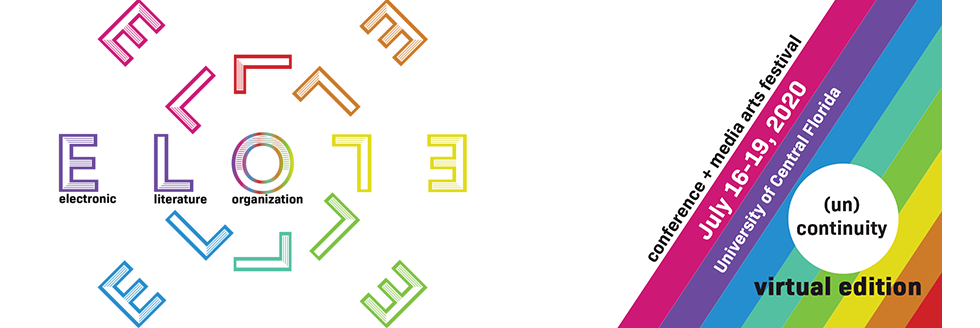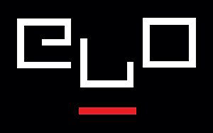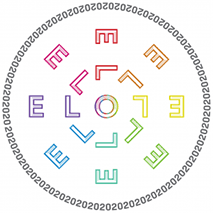Proposal Title
If This Junk Could Talk: How to "Haunt" Objects with Stories
Submission Type
Conference Talk - Individual
Abstract
The past two decades have seen a meteoric rise in platforms and formats for the hosting and distribution of electronic literature. Everything from podcasting to fanfic to photo essays is suddenly seen as The Next Big Thing, adapted as streaming series, video games, and even multi-film romance franchises. At the same time, electronic literature is seeing a rise in acceptance and prominence—even if much of it is still concerned with screens and keyboards.
What happens when an old rotary telephone is itself the platform to tell and interact with a story? What about a cuckoo clock? What about a bunch of old bottles that washed up on a beach? What stories could physical objects have to tell, and how can the inherent mode of interaction with the object be the affordance to also interact with the stories inside?
In other words: let’s haunt some old junk.
The popularity of mail-order “mysterious packages” and other “hunt a murderer” games, as well as the corresponding spike in popularity of escape rooms speaks in part to this gravitation to the physical, but stories don’t have to be shaped like books and puzzles don’t have to be made of just locks. When you "haunt" an object, you put magic inside of it: hidden technology that makes it come alive and behave in surprising and delightful ways.
Since their decision to “haunt” an old prop radio with an interactive radio drama, game designers and immersive media creators Martzi Campos and Jesse Vigil have been devoting a significant amount of their research and practice to the haunting of several new objects—formalizing a process of invisibly marrying technology with storytelling and infusing it into found objects. The intended result is to create the exact opposite of ubiquitous online platforms: intimate narratives that require a physical presence and literal hands-on with the objects themselves to unlock their secrets and stories.
In this short conference talk, Campos and Vigil discuss the process of taking Marshall McLuhan’s “the medium is the message” axiom to unexpected locations (like the flea market!) and some key lessons learned for designing both a narrative and a mode of interaction that seamlessly fits into a found object, no matter what it might be. Campos and Vigil will also provide an overview of cheap, overlooked technologies that can be harnessed and hidden in the objects to make them magical, as well as citing examples from and under-the-hood case studies from recent works, including a new haunted radio and a haunted telephone.
If This Junk Could Talk: How to "Haunt" Objects with Stories
The past two decades have seen a meteoric rise in platforms and formats for the hosting and distribution of electronic literature. Everything from podcasting to fanfic to photo essays is suddenly seen as The Next Big Thing, adapted as streaming series, video games, and even multi-film romance franchises. At the same time, electronic literature is seeing a rise in acceptance and prominence—even if much of it is still concerned with screens and keyboards.
What happens when an old rotary telephone is itself the platform to tell and interact with a story? What about a cuckoo clock? What about a bunch of old bottles that washed up on a beach? What stories could physical objects have to tell, and how can the inherent mode of interaction with the object be the affordance to also interact with the stories inside?
In other words: let’s haunt some old junk.
The popularity of mail-order “mysterious packages” and other “hunt a murderer” games, as well as the corresponding spike in popularity of escape rooms speaks in part to this gravitation to the physical, but stories don’t have to be shaped like books and puzzles don’t have to be made of just locks. When you "haunt" an object, you put magic inside of it: hidden technology that makes it come alive and behave in surprising and delightful ways.
Since their decision to “haunt” an old prop radio with an interactive radio drama, game designers and immersive media creators Martzi Campos and Jesse Vigil have been devoting a significant amount of their research and practice to the haunting of several new objects—formalizing a process of invisibly marrying technology with storytelling and infusing it into found objects. The intended result is to create the exact opposite of ubiquitous online platforms: intimate narratives that require a physical presence and literal hands-on with the objects themselves to unlock their secrets and stories.
In this short conference talk, Campos and Vigil discuss the process of taking Marshall McLuhan’s “the medium is the message” axiom to unexpected locations (like the flea market!) and some key lessons learned for designing both a narrative and a mode of interaction that seamlessly fits into a found object, no matter what it might be. Campos and Vigil will also provide an overview of cheap, overlooked technologies that can be harnessed and hidden in the objects to make them magical, as well as citing examples from and under-the-hood case studies from recent works, including a new haunted radio and a haunted telephone.





Bio
Interactive artists and designers Martzi Campos and Jesse Vigil are game designers, circuit-benders, writers, performers, and self-described interactive magicians (and ELO alums.) Their work includes immersive narrative experiences, ARGs, pervasive games, and curious objects that are always more than they appear. Both teach at the University of Southern California in the School of Cinematic Arts Interactive Media & Games Division.
Martzi Campos is an interactive artist. Her work focuses on combing her installation art background with digital technology and interactive design to create magical experiences. She has a BFA from Rhode Island School of Design with a focus on Installation art, and a MFA from the University of Southern California in Interactive Media and Games. Her games and art have been featured at IndieCade, PAX, Dreamhack, Experimental Games Workshop, ELO, SIGGRAPH, and the Hammer Gallery among others.
Jesse Vigil is a designer, audio enthusiast, and storyteller whose work spans film, games, television, immersive experiences, and everything in between. He is a twice graduate of the University of Southern California with a BA in Cinema-Television Production and an MFA in Interactive Media. He is the co-founder of Los Angeles creative studio Psychic Bunny, the former CEO of indie games publisher Codename:Games, and a serial entrepreneur. His work has been featured at E3, PAX, Dreamhack, Games for Change, IndieCade, ELO, SIGGRAPH, GDC, SXSW, and festivals around the world.